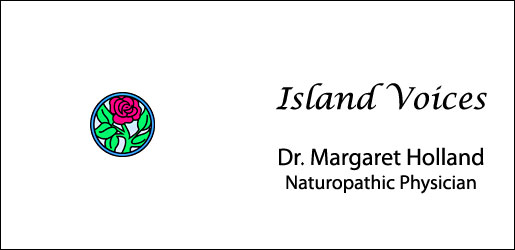Current Article ∙ Archive ∙ Back to Island Voices
Reactional Mode 3
A Brief Description for Defining Health and Disease
By Dr. Margret Holland, B.Sc., N.D.
Welcome to the continuation on the Reactional Mode Theory of disease differentiation. Over the course of the last two months we have explored Reactional Modes 1 & 2 which both fall into the category of functional disturbances. Now we progress into more serious conditions where there is an actual lesional change in the body as the result of prolonged illness. At this stage lab work is showing abnormal values and physical changes may be visible on imaging. This is the area of frank disease, not just a general feeling of malaise.
Another way of looking at disease is to consider the degree of toxicity that a patient may be dealing with. In functional disease (i.e. RMs 1 & 2), toxins are present but the body is able to expel them before serious damage to the cells has occurred; though in RM 2 the body is experiencing greater difficulty with the task at hand. In lesional disease (RM 3 & 4), the toxins have infiltrated into the various organelles of the cells, and in some cases may have even had an effect on the DNA. These toxins are much more firmly entrenched and require a great deal more time to excrete. Depending on the degree of damage to the cells, the lesions may or may not be reversible.
We will now explore Reactional Mode 3, which is often referred to as a dystonic state. Patients generally evolve into this mode from the hyper-reactive state, i.e. RM 1.
These patients oscillate between high and low energy. They may especially complain of low energy in the later part of the day. They may feel tired but sleep poorly with fits of wakefulness throughout the night. Stress tends to worsen their symptoms; meditation and relaxation tend to improve them.
Common complaints include: episodes of tachycardia (racing heart), tinnitus, labile blood pressure (sometimes high, sometimes normal or low), shortness of breath, esophageal or gastric spasms, irritable bowel, gastric ulcers and/or joint pain. The main indicator of this reactional mode is spasm or intermittent expression of their complaints.
As you can infer from their disease expression they are progressing to a point where they have begun to exhaust their vitality. Their body is trying desperately to maintain a good level of health but the energy reserves required to attain this are depleted. Generally speaking, this state is more common in adults than children.
Next month we will explore Reactional Mode 4.
Dr. Holland can be reached at (250) 752-2732 or #3-702 Memorial Avenue, PO Box 564, Qualicum Beach, BC. V9K 1T1.
For a consultation, please call me at 752-2732.


![holland-4colourcircle[1]](https://seniors101.ca/wp-content/uploads/2011/05/holland-4colourcircle11.jpg)